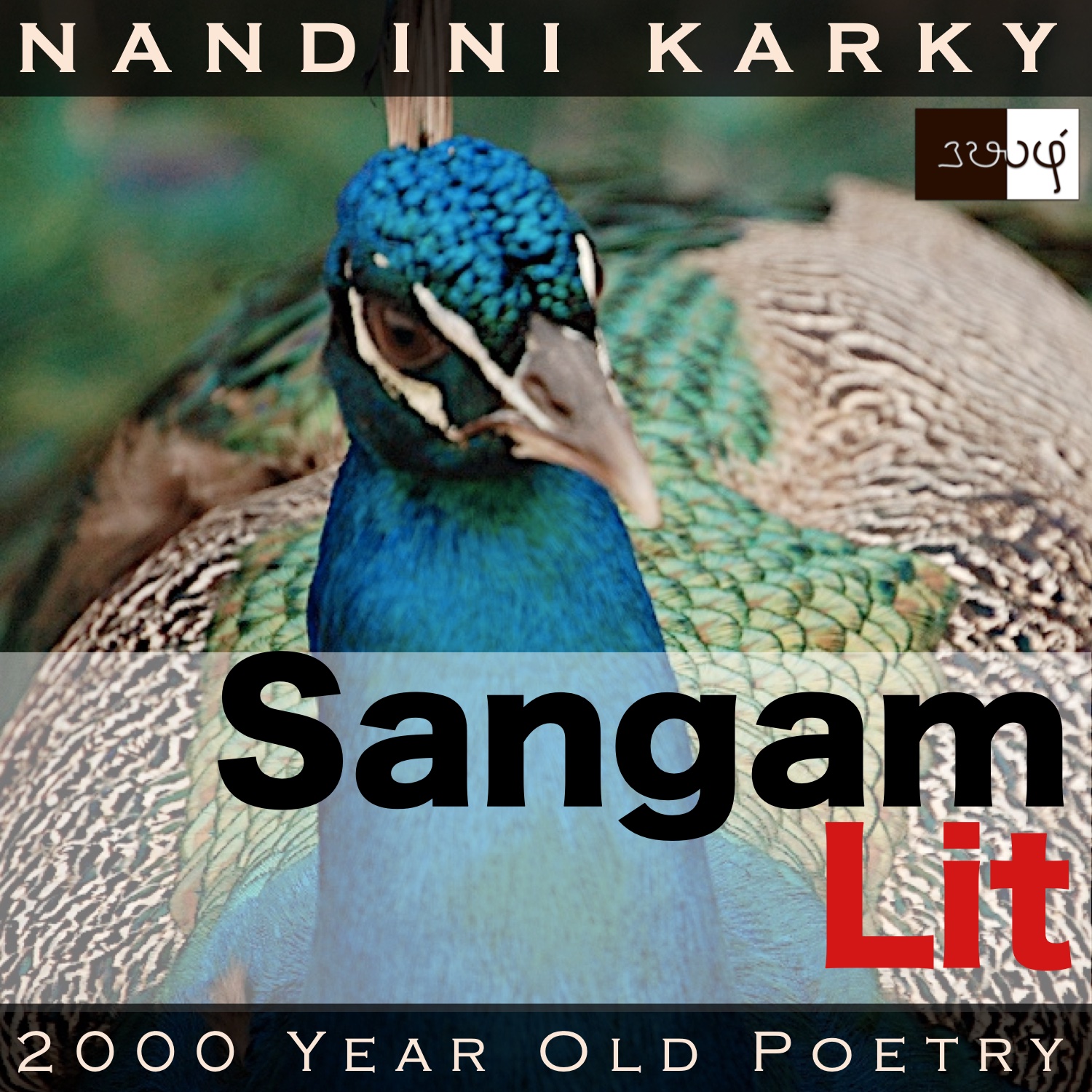Podcast: Play in new window | Download
Subscribe: Apple Podcasts | Spotify | Amazon Music | Android | iHeartRadio | TuneIn | RSS | More

In this episode, we perceive the precise reasons for a lady’s angst, as portrayed in Sangam Literary work, Kurunthogai 194, penned by Kovarthanaar. The verse is situated in the forest regions of ‘Mullai’ and speaks in the voice of the lady to the confidante, as the man is delayed beyond his promised season of return.
என் எனப்படுங்கொல்-தோழி! மின்னு வர
வான் ஏர்பு இரங்கும் ஒன்றோ? அதன் எதிர்
கான மஞ்ஞை கடிய ஏங்கும்;
ஏதில கலந்த இரண்டற்கு என்
பேதை நெஞ்சம் பெரு மலக்குறுமே?
‘The seeming attack of forces outside’ is detailed in this verse. The opening words ‘என் எனப்படுங்கொல்’ meaning ‘how is this to be seen’ paints a picture of bewilderment. In the phrase ‘மின்னு வர வான் ஏர்பு’ meaning ‘as lightning flashes and climbing the high skies’, we can instantly picture dark clouds soaring above, to pour down. A picturesque element of nature appears in ‘கான மஞ்ஞை’ or ‘jungle peafowl’. Ending with the words ‘பேதை நெஞ்சம் பெரு மலக்குறுமே’ meaning ‘the naive heart is in a huge turmoil’, the verse beckons us to listen with empathy.
Thundering rainclouds and dancing peacocks paint a pretty picture indeed! The context reveals that the man and lady were leading a married life when the man parted away to gather wealth. Before he leaves, he promises to return by the rainy season. Observing the approaching rains, the confidante worries about the lady. To the confidante, the lady says, “What to call this, my friend? Are the rainclouds that roar, climbing the skies and flashing with lightning, the only thing? In response, the jungle peafowl calls hurriedly. These two fuse together, without a thought about me, and leave my foolish heart in a state of utter confusion!” With these words, the lady explains to her friend all the elements that seem to torment her, even as the man is delayed in his return.
Time to explore the nuances in this tiny verse! The lady starts by wondering aloud to her friend in a totally puzzled manner, asking ‘what do I call this?’ Then, she goes on to say, it’s not only the flashing sky and the rainclouds rising high but something else as well. This statement makes us infer that the confidante must have pointed to the changes in the weather to indicate her worry. Returning, the lady continues by mentioning the other thing, which is, on seeing these changes around, peafowl in the jungles start crying out excitedly to their mates. It’s their time of togetherness and sounds fill the air, proclaiming that. While that may be a natural event, the lady declares that these two elements have no concern for her state. The raincloud and the peafowl are acting like strangers to her fate, and so, her foolish heart is tormented by these two, and is in a complete muddle, the lady concludes.
It’s as if the lady is telling the confidante, ‘Oh, so did you think it was just the rainclouds bothering me. Listen to that peacock’s tormenting cry too!’ Also, her puzzled question in the beginning tells us that she wonders how these elements outside her can cause so much pain within her. And, that is the core of this verse, which declares that the effect of events around us depend on the meaning we ascribe to the same. To another, say, a person seeking novelty in nature, this very sight of peafowl in the rain maybe the cure, whereas to the Sangam lady, these are the cause of her disease. Goes on to show that the events around us are heavily impacted by the narratives in our minds and when we can distance ourselves wisely, that may help us bear many a moment of mental discomfort!




Share your thoughts...